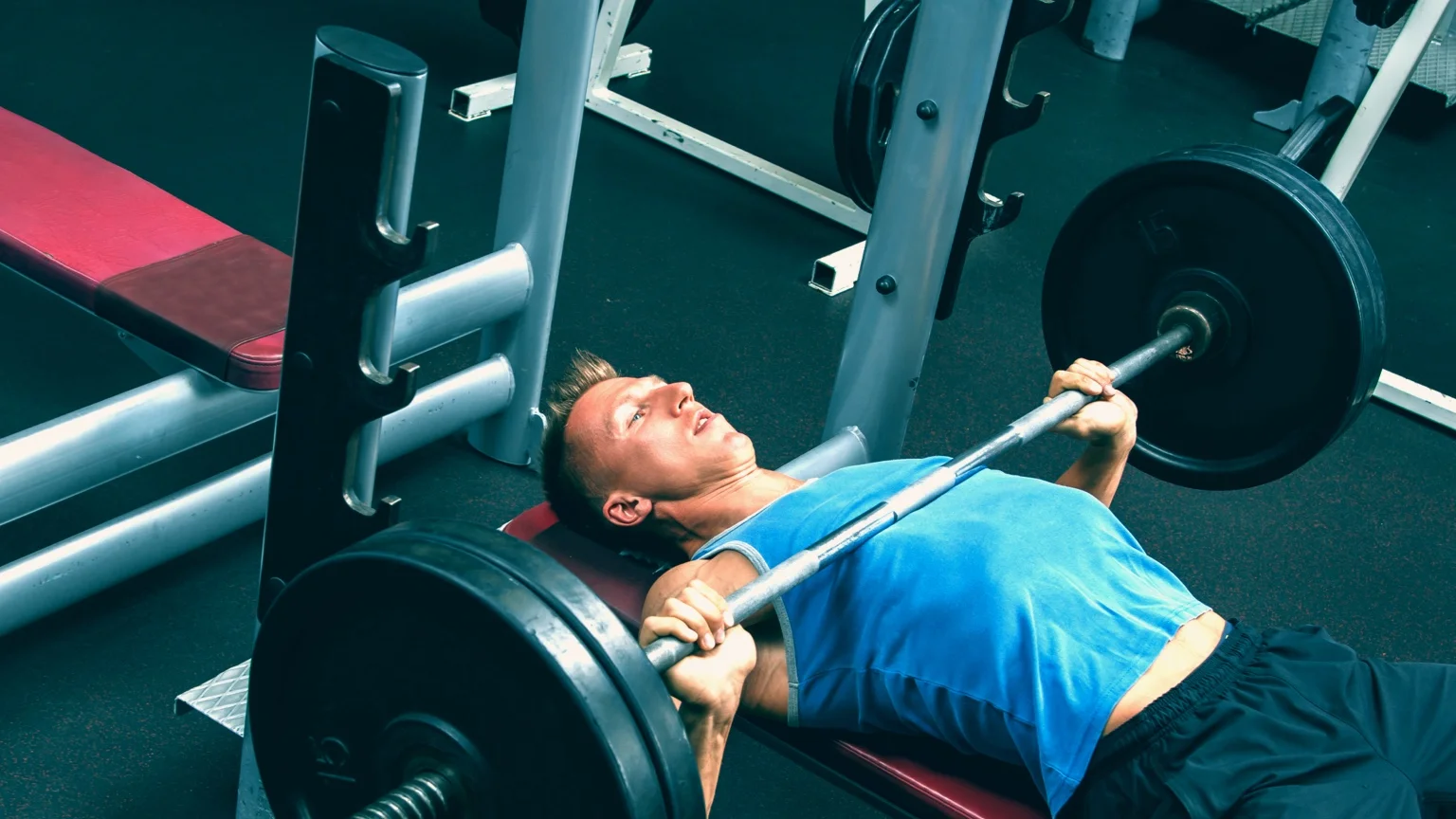
New
Build a workout routine for your personal fitness level and goals
Create a personalized workout plan using Gym Geek’s new AI tool. Gym Geek AI can generate a single workout or a structured routine for any fitness goal.
Powered by
Push day is all about targeting three muscle groups: your chest, shoulders and triceps. As part of a push pull legs (PPL) workout, the push day workout makes use of horizontal presses, vertical presses, lateral raises and tricep extensions. The idea is to train all the pushing movements in a single workout, separate from pulling exercises and a dedicated leg day.
Dedicating a day to pushing exercises allows you to achieve a high training volume for your chest, shoulders and triceps. As part of a 6 day PPL, you typically will have two push workouts per week, although a 5 day PPL will combine your second push day with pulling exercises.
Gym Geek’s standard push day workout is made up of exercises like bench press, shoulder press, incline dumbbell press, lateral raises, cable crossovers and tricep extensions.
As part of a push pull legs split
A push day workout is normally part of a 6 day or 5 day PPL split. A PPL split divides your routine into 3 types of workout:
- Push days – Exercises targeting your chest, shoulders and triceps, including bench press, shoulder press and tricep extensions.
- Pull days – Exercises targeting your back, biceps and rear delts, including lat pulldowns, pull-ups and face pulls.
- Leg days – Exercises that work your lower body, including deadlifts, squats, lunges and calf raises.
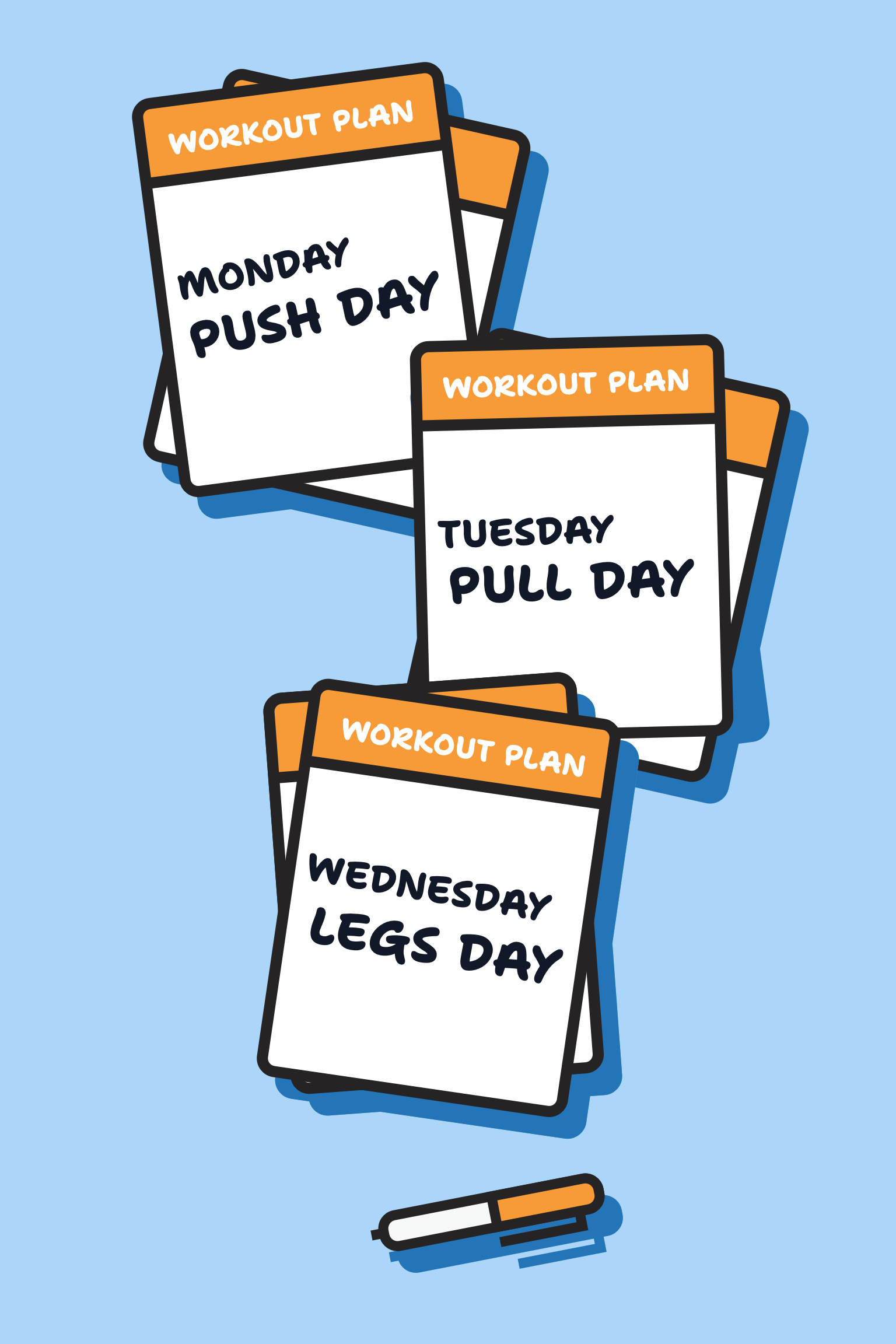
Push day primarily focuses on your upper body, which many people prioritize for aesthetic reasons since it can result in a broad chest and a more sculpted back and shoulders.
What is a pushing exercise?
Pushing exercises are the movements that push a weight away from your body. These movements naturally work the chest (pectoralis major and minor), shoulders (deltoids) and triceps, and it’s for that reason we use exercises like bench press, overhead press and lateral raises as part of push day. These are all movements that push the weight or resistance away from your body.
Muscles worked on push day
Chest
The primary muscles in the chest are the pectoralis major and pectoralis minor. The pectoral muscles (commonly known as pecs), are the large, fan-shaped muscles in your chest. The muscles are responsible for the movement (adduction) of your shoulders and arms. The pecs are also important for maintaining good posture of your torso.
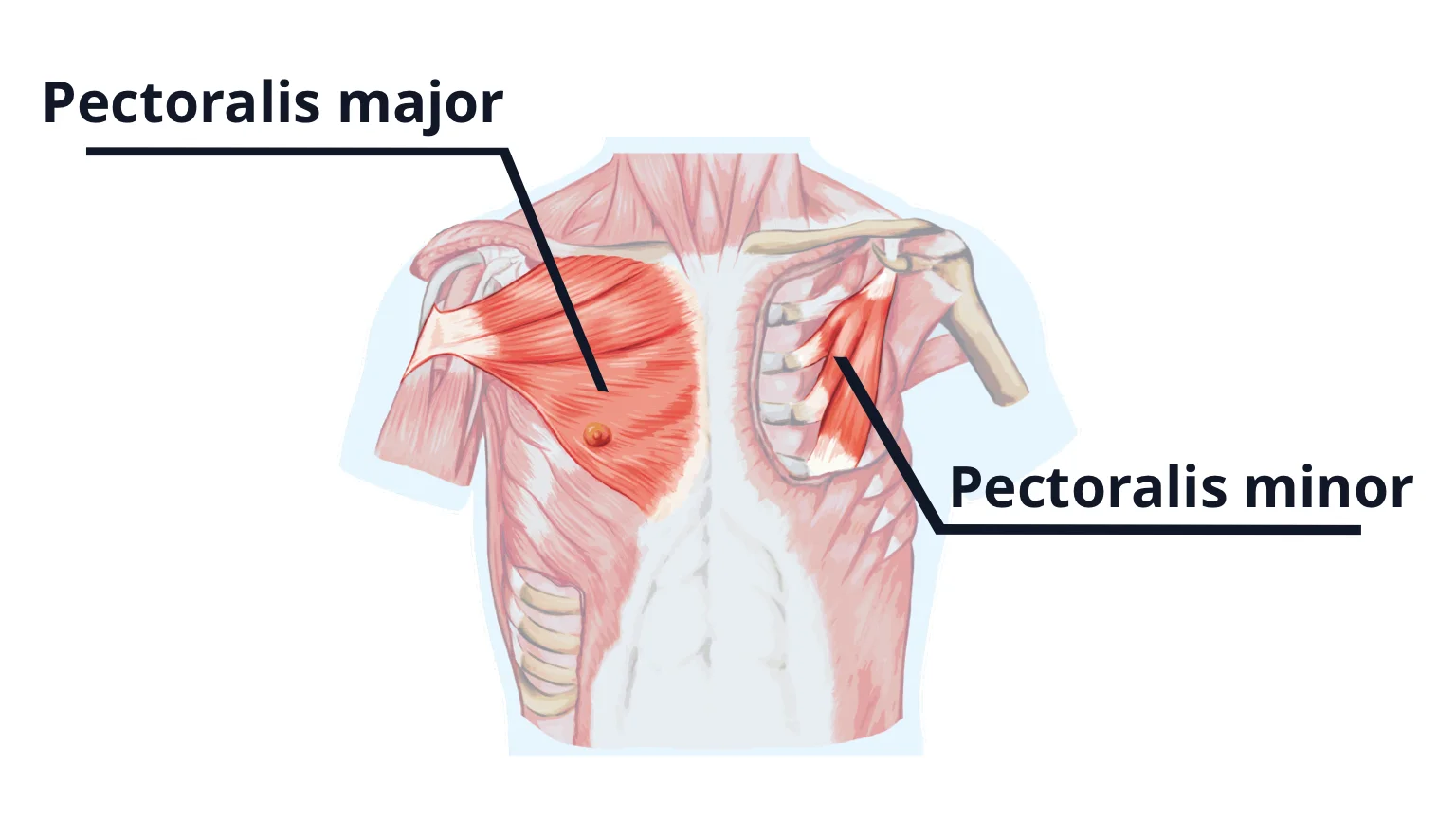
The pectoralis major is the larger of the two, covering most of your chest area. It’s responsible for the movement of your shoulder joint. The pectoralis minor is a thin, flat muscle located underneath the pectoralis major. It helps move your shoulder blade.
The pectoralis major has two “heads”.
The clavicular head originates from the clavicle (collarbone) and connects to the humerus. As part of the pecs, this head helps move and medially rotate the arms, but can also independently flex the shoulder.
The sternal head originates from the sternum, fanning out to also connect to the humerus. This head also acts to create movement and rotation of the arms.
Each exercise on push day will either be more effective in targeting the clavicular head or sternal head. You’ll notice that our workout contains both a flat bench press and an incline press. This is because the incline variation of the exercise puts more emphasis on the clavicular head.
Shoulders (deltoids)
The lateral deltoids, also known as middle deltoids or side deltoids, are your outermost shoulder muscles, responsible for raising your arms to the side. They have a rounded, triangular shape. Increasing the size and strength of these muscles can enhance your upper body appearance, and also help in everyday lifting and pulling activities.
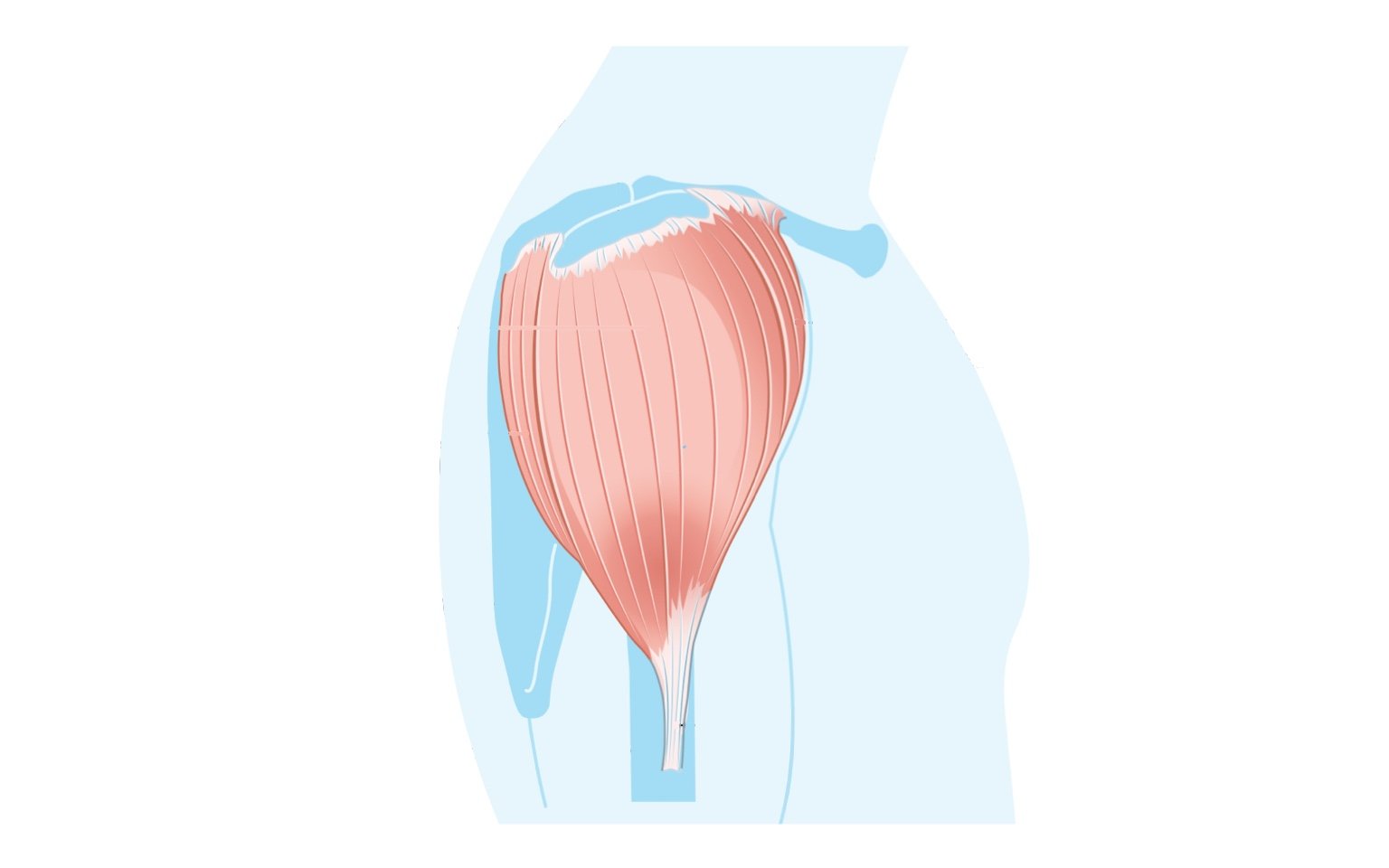
Your posterior (rear) delts are another important shoulder muscle, but this muscle is targeted on pull day with exercises like bent over rows.
Triceps
Your triceps brachii, more simply known as triceps, are the large muscles located at the back of your upper arms. The triceps have three heads, known as the long head, the lateral head, and the medial head. The triceps are primarily responsible for the extension of the elbow joint, which allows the arm to straighten.

Planning your push day
The push day workout is focused on exercises the involve pushing movements – i.e. moving a weight away from the center of your body. You will want to include exercises that target your chest, shoulders and triceps in a balanced way. Good exercises to think about are bench presses (flat, incline or decline), overhead presses and tricep exercises.
A typical push day routine might look like this:
- Warm up: Start with 10-15 minutes of light cardio and stretching before you being your push day workout.
- Compound movements: The compound exercises like bench press and shoulder press should come first. For most exercises, we’ll want to do 3-4 sets with about 8-10 reps.
- Isolation movements: Once you’ve done the compound movements, move onto the isolation exercises like lateral raises and tricep extensions. These exercises target a specific muscle and we can do a few more reps here.
When to do a push day
If you are following a push pull legs (PPL) workout split, it is most common to do your push day workout first in the routine.
Here’s how a typical week might look:
- Monday – Push
- Tuesday – Pull
- Wednesday – Legs
- Thursday – Rest
- Friday – Push
- Saturday – Pull
- Sunday – Legs
It’s a good idea to take a rest day after legs day, so you might want to think about alternating the schedule week by week to ensure you get 2 rest days every 8 days.
The push pull legs is the traditional PPL routine that is popular with both beginners and advanced weightlifters. Push pull legs is the most popular ordering, and allows for adequate recovery between hitting the same muscle groups. Including enough rest and recovery time between exercises is important for progression and reducing the risk of injury.
Some people, however, advocate for swapping the push and pull days. Starting with a pull day workout helps to warm up the shoulder muscles (which are worked on both push and pull days) with less stress.
Ultimately, choosing between push-pull-legs and pull-push-legs is a personal choice based on your fitness level and goals, as well as your body’s response to your workout. If you are a beginner, you may want to start with the traditional push pull legs split. More advanced lifters may want to consider pull push legs to prioritize their shoulder health.
The Push Day Workout
- Barbell bench press – 3 sets of 5-8 reps
- Shoulder press – 3 sets of 8-10 reps
- Incline dumbbell press – 3 sets of 8-10 reps
- Side Lateral Dumbbell Raises – 3 sets of 8-12 reps
- Cable crossover – 3 sets of 10-15 reps
- Overhead tricep extensions – 3 sets of 8-12 reps
Push day exercises
Barbell bench press
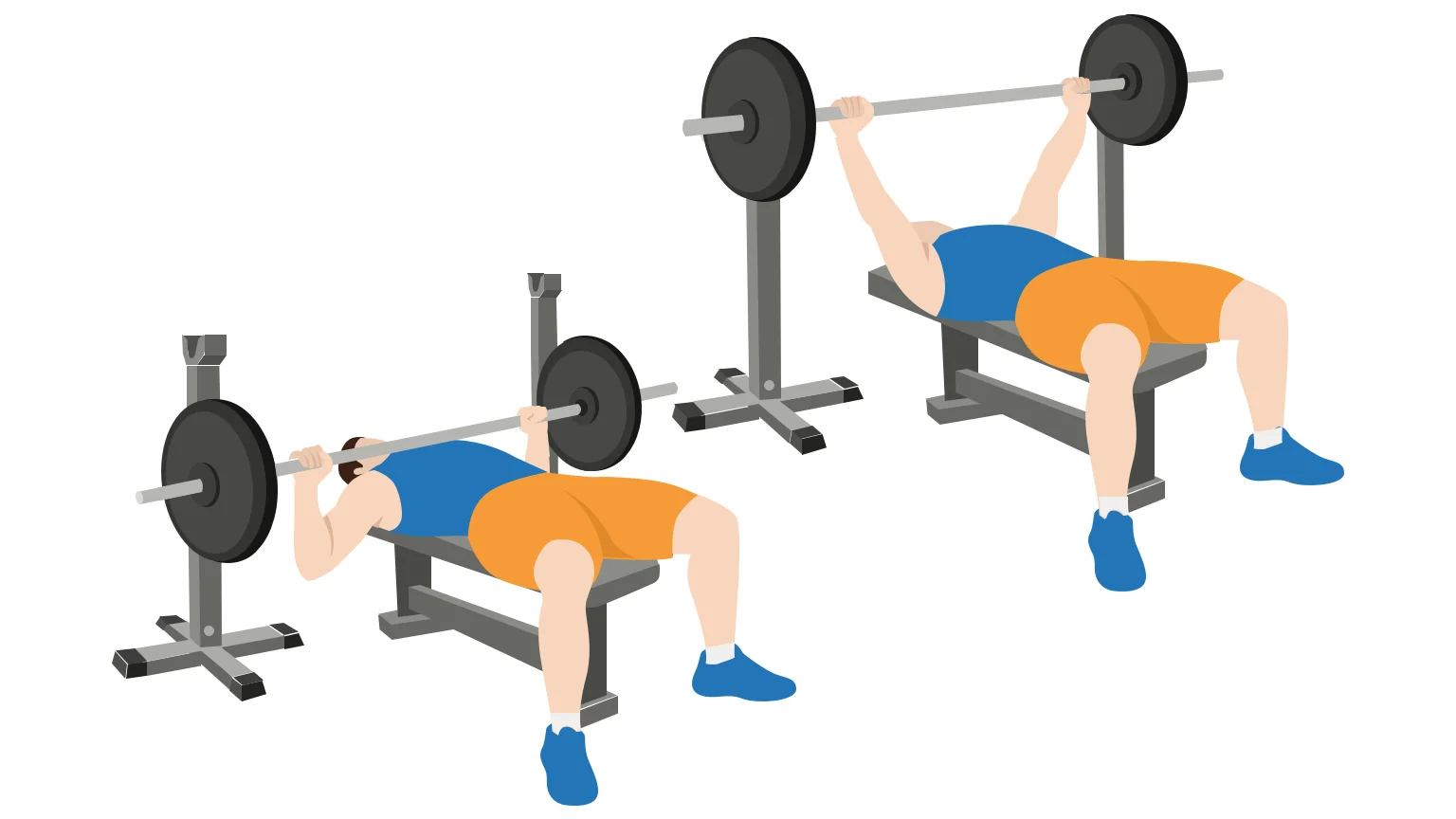
Why: The barbell bench press primarily targets your pectoralis major muscles in your chest. It also works your deltoids and triceps, making it a great compound exercise to kick off your push day. It’s a good idea to perform this exercise first in your routine because it engages multiple muscle groups and demands your energy and strength. It will also help prepare your muscles for the other exercises that follow. The rep range for this exercise is 5-8 reps.
How to do: Lie flat on your back on a training bench. Grip the bar with your hands slightly wider than shoulder-width apart. Lift the bar from the rack and hold it directly over your chest with your arms fully extended. Inhale and lower the bar slowly until it touches the middle of your chest. Now, exhale and push the bar back up to the starting position, fully extending your arms without locking your elbows.
Read more: How to Do a Bench Press
Shoulder press
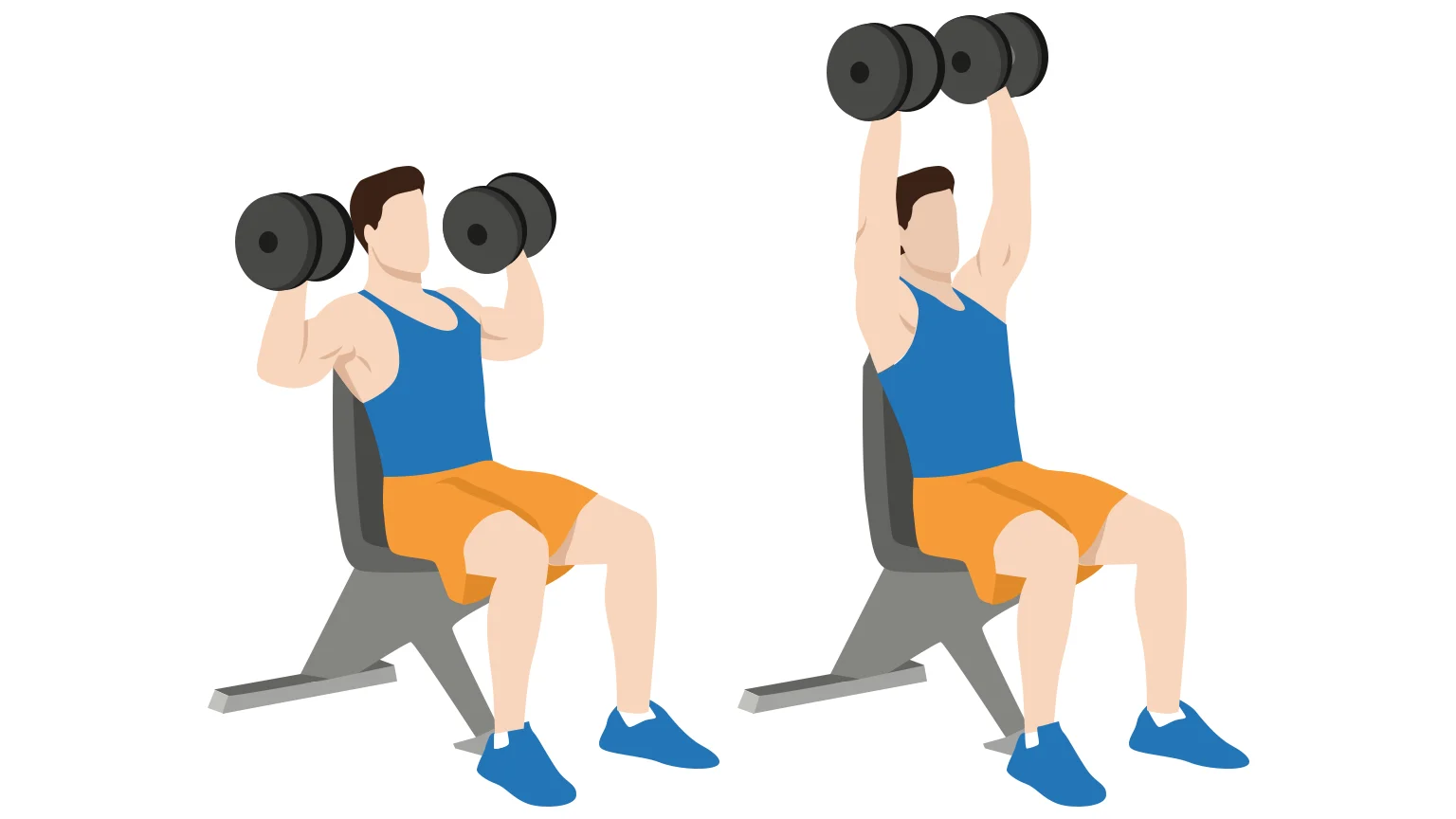
Why: The shoulder press primarily targets your deltoids, but it also engages your triceps and upper pecs. It’s another great compound exercise to do early in your push day routine. Shoulder press improves your upper body strength and helps your perform in other push exercises like bench press and dips.
How to do: Sit on a bench with back support. Hold a dumbbell in each hand at shoulder level with a pronated grip (palms facing forwards). Engaging your core, and keeping your back straight, exhale and push the dumbbells up until your arms are fully extended above your head. Don’t lock your elbows. Squeeze at the top of the movement, then slowly lower the dumbbells back to the starting position.
Read more: How to Do Seated Dumbbell Shoulder Press
Incline dumbbell press
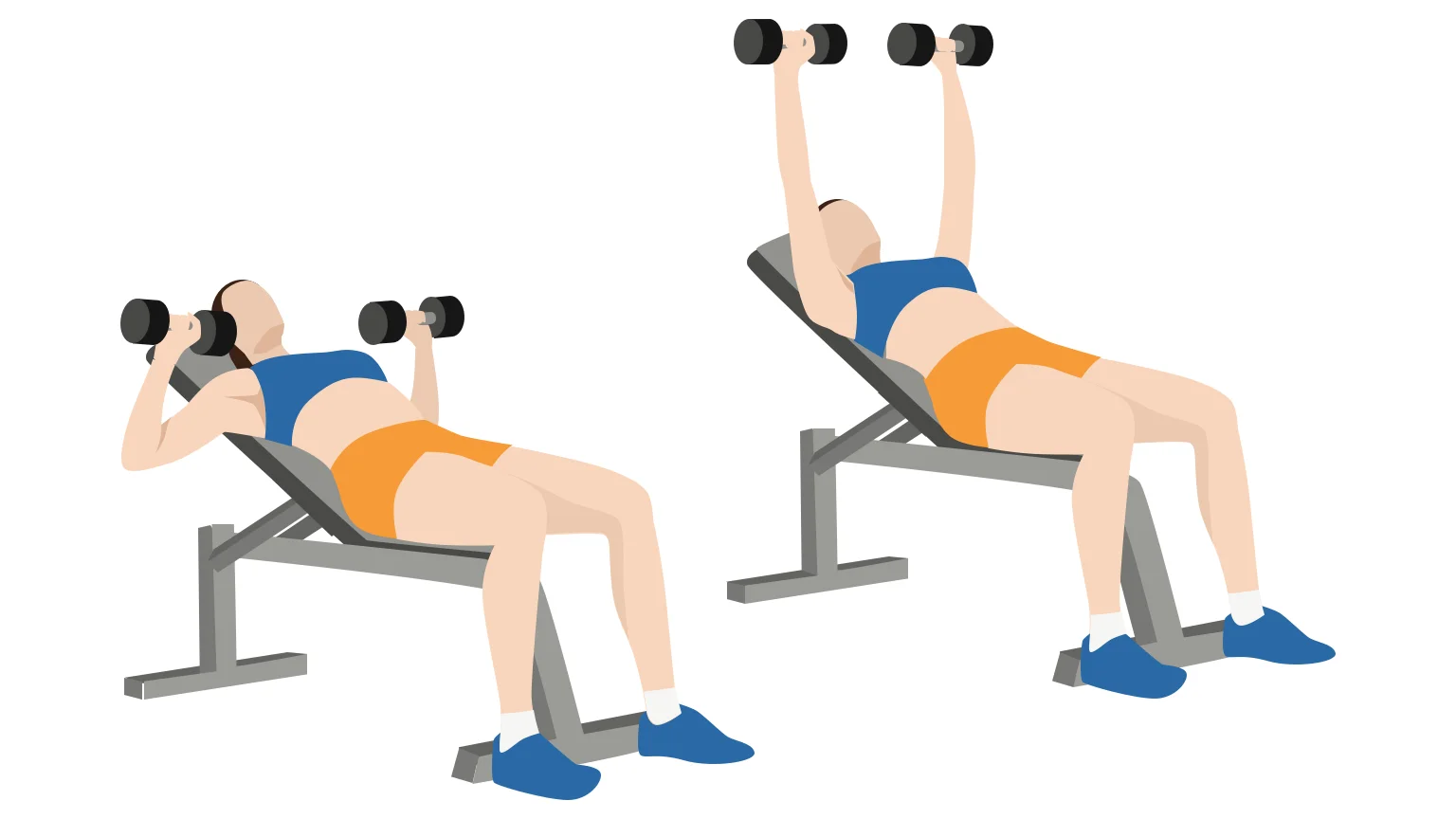
Why: Similar to the flat bench press, this exercise primarily works your pectoralis major muscles in your chest. It does, however, put a greater emphasis on the upper portion of your pecs. This can help develop a well-rounded chest and improved shoulder strength. In addition, it also engages your front deltoids and triceps. The use of dumbbells also allows a great range of motion compared with a barbell press.
How to do: Sit on an incline bench, holding the dumbbells at shoulder height. Keep your feet flat on the floor. Exhale and push the dumbbells up until your arms are almost fully extended above you. Pause at the top of a second, then slowly lower back to the starting position, inhaling as you lower.
Read more: How to Do Incline Dumbbell Press
Side lateral dumbbell raises
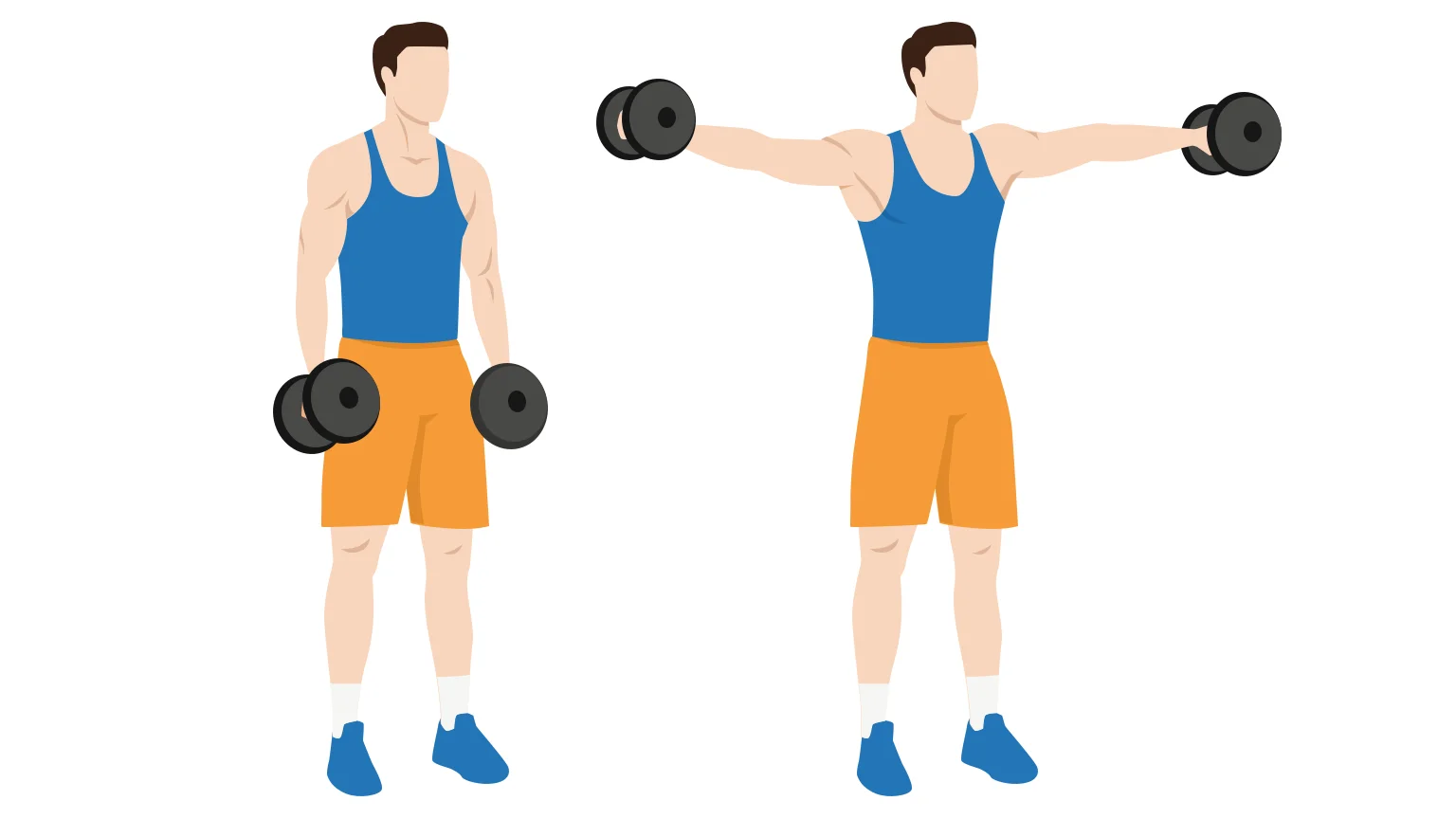
Why: Lateral raises are an isolation exercise that work your lateral deltoids. These are the muscles on the sides of your shoulders. Unlike the first three push exercises, lateral raises specifically target your shoulders. They also differ in movement since you are moving the weight out to the sides, rather than pushing them away from your body. Doing lateral raises will help build strength and definition in your shoulders, and improve your overall upper body strength.
How to do: Stand straight with a dumbbell in each hand. Use an overhand grip with your palms facing each other. Keep your feet shoulder-width apart. With a slight bend at your elbows, slowly lift the weights out to your sides until they are at shoulder level. Hold and squeeze at the top of the movement, then slowly lower the weights back to the starting position.
Read more: How to Do Dumbbell Lateral Raises
Cable crossovers
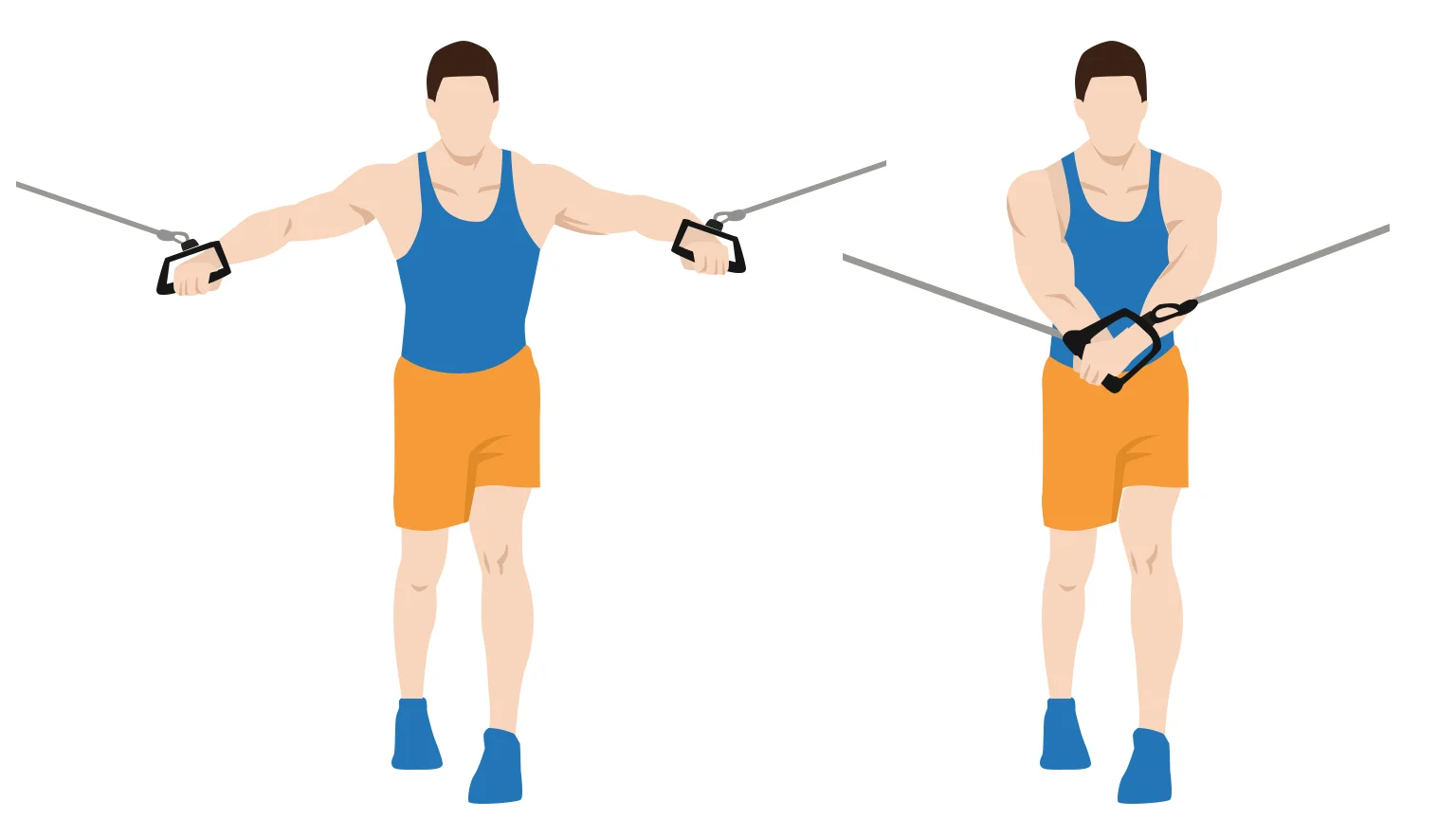
Why: Cable crossovers primarily work your chest muscles – both your pectoralis major and pectoralis minor muscles. They also engage your deltoids, biceps and triceps to some extent. Following the compound exercises, cable crossovers can be used to exhaust your chest muscles, ensuring maximum engagement of your chest in the workout. The cable machine provides a constant tension, allowing you to use a higher resistance than would be possible with free weight exercises.
How to do: Adjust the pulleys on a cable system above your head. Stand with your feet shoulder-width apart and hold the handles with an overhand grip. With a slight bend in your elbows, pull down across your body until your hands meet at your waist height. Keep your chest up and shoulders down throughout the movement. Finally, slowly return back to the starting position, engaging your chest muscles.
Read more: How to Do Cable Crossovers
Overhead tricep extensions
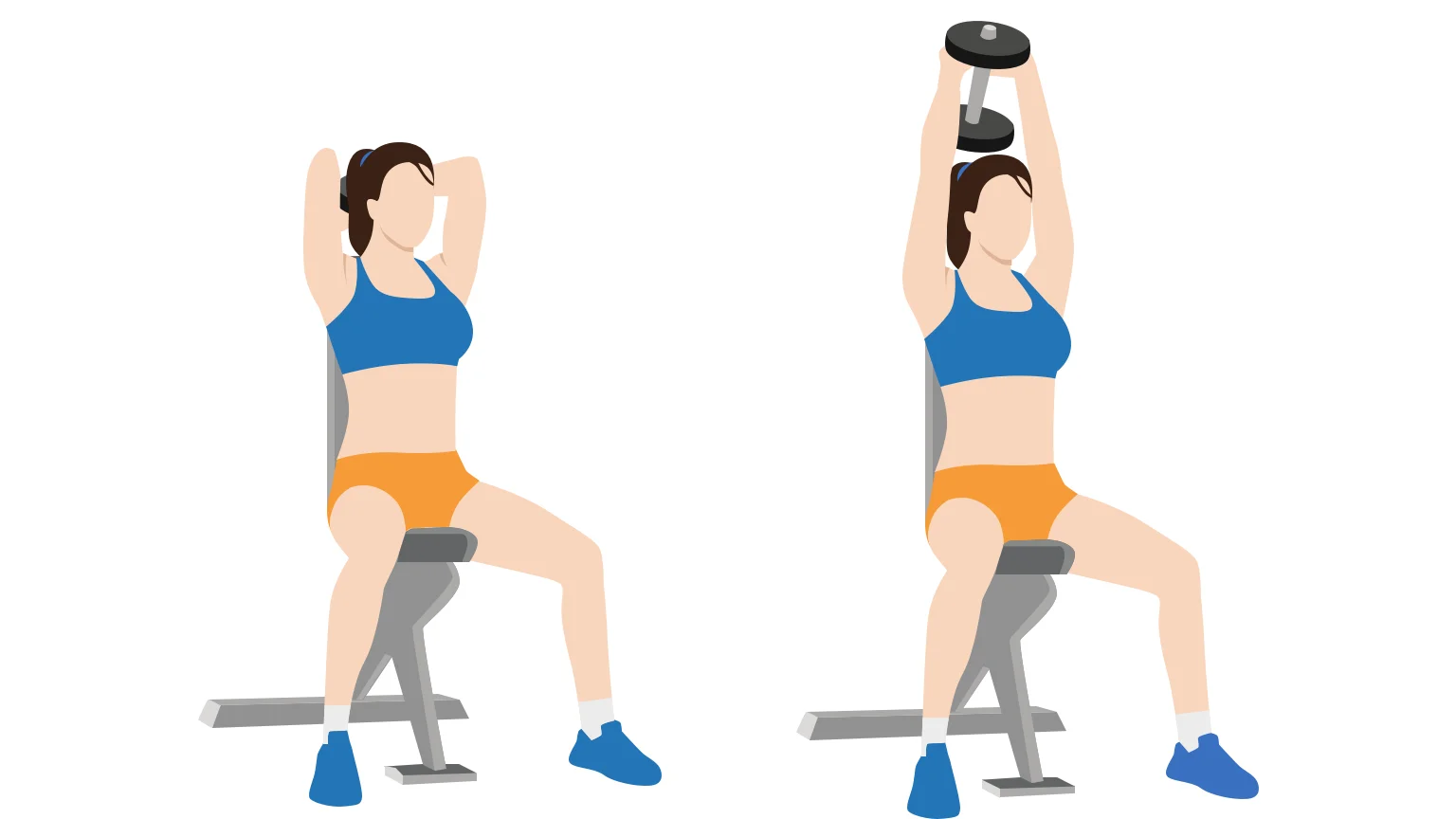
Why: Overhead tricep extensions is an isolation exercise that specifically targets your triceps muscle, the large muscle at the back of your upper arms. It also engages your shoulders for stabilization. This exercise strengths and tones your triceps, improves your upper body strength and enhances your overall muscle balance. Strong triceps are essential for performing everyday activities and sports that require upper body strength.
How to do: Stand with your feet shoulder-width apart. Engage your core for stability, and draw back your shoulders. Hold a dumbbell with both hands, and bring it back behind your head. Your elbows should be bent at a 90-degree angle with your upper arms pointing upwards. Keep your elbows close to your head and ears. Extend your arms up towards the ceiling, lifting the dumbbell above your head. Once your arms are fully extended, pause, then slowly return to the starting position.
Read more: How to Do Triceps Overhead Extensions
Tips
Always warm up
Before you start your push day workout, it’s essential that you warm up first. Warming up will increase your heart rate, gently stretch your muscles and increase the blood flow to them. It also helps prevent injuries because your muscles are prepared for the coming workout.
Start with light cardio, for example a jog for about 5-10 minutes to get your heart rate up. Follow this by some dynamic stretching that focuses on your chest, shoulders and tricep muscles.
Maintain proper form
When performing your push day exercises, maintaining proper form can not only reduce the risk of injury, but it can also improve the effectiveness of the exercise. We recommend checking out the detailed guides for each of the exercises, and consult with a personal trainer if you are unsure about the movements.
